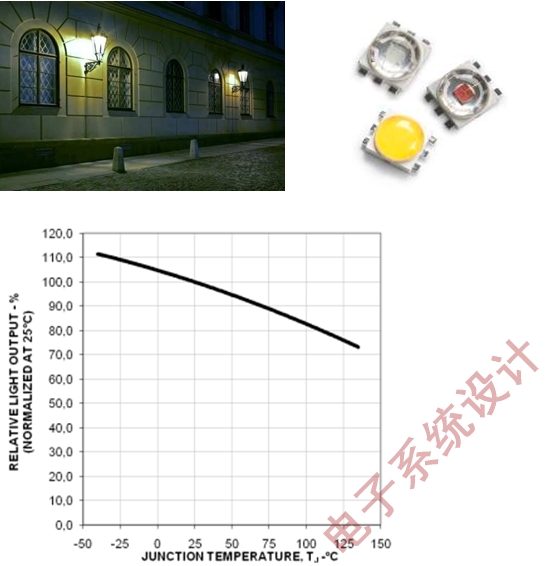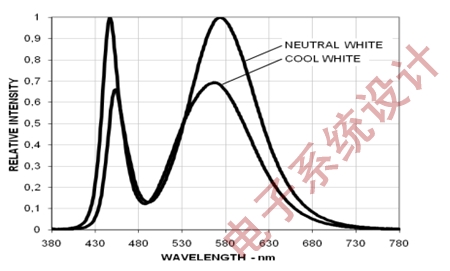This article describes the benefits of using neutral white LEDs in place of cool white LEDs in street lighting applications, including the visibility of liquids on the street, the tone of skin and flowers. In addition, this article will also explore solutions for temperature and optical design, such as forced ventilation, glare, and brightness. Thanks to the small size and variety of LED technology, it is easy to implement new streetlight designs.
Based on budgetary constraints, LED lighting can save on electricity bills with fewer maintenance cycles and energy-saving innovative dimming technology.
In recent years, through the evolution of technology, LEDs have been significantly improved in photometric output, luminous efficiency and service life, so it is increasingly attractive for a variety of applications that have used other light sources in the past, especially street lamps are currently available. Applications that use LED technology to solve them.
LED-based streetlights first appeared on the streets a few years ago, although they were mainly used to showcase design concepts or campus test lights. The yellow phosphor was one of the only available and stable phosphors used to produce white light output with a blue chip. Most of these street lights are designed with cool white LEDs and a color temperature of about 6000K or higher. Unfortunately, most people don't like the cool white light from these street lights, and some even complain that cold white light will bring a cold feeling. In addition, some people think that the color appears pale under the illumination of the cool white light source.
LED and phosphor manufacturers heard feedback on the first-generation prototype setup and began developing new neutral white high-brightness output LEDs for street lighting applications using a more natural, 4000K color temperature. For example, Avago Technologies ( Avago's ASMT-JN32-NVV01 is capable of delivering 100 lm or 700 mA at 350 mA to provide a minimum typical 4000K correlated color temperature (CCT) photometric output of 160 lm.
The LM-80 LED Life Test Recommendations require LED light sources to have a minimum life of 35,000 hours, and newer high power LEDs can achieve a minimum of 60,000 hours (L70, B10) at high junction temperatures. With an average of 12 hours per day (about 4,400 hours a year), streetlights using the latest LED technology can easily reach a 10-year life without the need to replace the light source.
From the perspective of product packaging, modern LED packages have a low thermal resistance of 6~9°C/W (K/W). This helps to transfer heat from the junction to the heat sink as much as possible. In addition, the photometric output at different junction temperatures is also very stable, with less than 20% variation in the junction temperature range of 25oC to 110oC (see Figure 1).

Figure 1: Diagram of the photometric output and junction temperature of a neutral white LED.
Another benefit of using neutral white high-power LEDs is that they use advanced phosphor technology to provide better spectral distribution. Compared to cool white LEDs, neutral white LEDs emit more light with yellow and red wavelengths (see Figure 2). This spectral distribution helps to distinguish between different liquids on the asphalt surface. Cool white LEDs basically make the oil, water or cherry juice on the street very difficult to distinguish - if you are driving, it can be helpful to identify the oil on the ground! On the other hand, a neutral white light source can make brown oil stains or red cherry juice very easy to distinguish.

Figure 2: Comparison of the spectral distribution of neutral white and cool white light.
In addition, the skin tone under the neutral white LED light source is more natural. The colored calyx and green turf of the home next to the street will also look more welcoming and warmer. Community security and personal safety are also enhanced by brighter street lights. According to global statistics, cases of theft and car theft are greatly reduced under better street lighting.
The use of LEDs is simple and versatile, and can lead to many new and fascinating streetlight designs, such as ultra-thin designs and long or square lamp housings. Designers and engineers must consider all design aspects (including temperature, optics, and electrical) to complete a successful commercial streetlight project.
Temperature design
The luminosity output of the LED is dominated by the temperature characteristics of the lighting module, whether it is after 20 minutes or 5 years of operation. A rule of thumb is that the LED dissipates 1W of heat and requires approximately 1in2 of metal core printed circuit board. Therefore, a 3W source requires an approximately 3in2 or 1935mm2 MC-PCB to withstand an ambient operating temperature of up to 85oC.
If it is not possible to provide a large area of ​​MC-PCB for each LED, additional heat sinks can be used to help dissipate heat. There are basically two main types of passive heat sinks: one is extruded metal such as aluminum, and the other is high quality metal fins. Heat sinks that typically use metal fins have the lowest thermal resistance but the highest price. If the design is cost sensitive and the space is not limited, extruded metal fins are a good choice.
Another way to cool the LEDs is to use an active cooling system. Conventional active cooling systems use liquids such as water or oil or use forced air to dissipate heat. Forced air cooling usually uses a fan, which may be the most suitable solution for LED cooling.
New practices include the use of a membrane cooler, which is said to achieve a similar lifetime to LEDs (up to 60,000 hours or more).
Whether using active or passive cooling, the thermal interface material (TIM) must be used to connect the board to the heat sink, even if the MC-PCB or multilayer FR-4 PCB appears to be directly attached to the heat sink. However, extremely small unevenness on the surface will result in a slight air gap, which will increase the thermal resistance. Therefore, you must use thermal grease, grease or thermal tape to support heat dissipation.
optical design
The European EN 13201 standard defines specifications for street lighting in different regions, including roads, urban roads, intersections and sidewalks. Acceptable brightness and uniformity depend on the LED usage. For streets and intersections with large traffic flows, there must be sufficient brightness and uniformity. In terms of safety, it is also necessary to avoid glare to the driver.
All of these factors can be easily adjusted by the second level optical product. Manufacturers of second-level optical products offer off-the-shelf solutions or customizable capabilities for the most common LED packages.
Certain street areas (for example, crosswalks, roundabouts, or dangerous intersections) have legally specific lighting requirements. In the past, these were usually provided with yellow high-pressure sodium lamps; currently, these lamps can also use monochromatic yellow LEDs or a combination of warm white and yellow high-power LEDs (such as Avago Technologies' ASMT-JA30-ARS01 or ASMT- JY32-NTV01) to replace.
Electrical Design
LEDs are devices that operate with current and the drive circuit must be able to regulate the output voltage with a fixed output current. For example, the current applied to the Avago ASMT-JN32-NVV01 can be 300mA or 700mA DC current or up to 2400mA pulse current, depending on the frequency and duty cycle used (Figure 3).

Figure 3: Maximum pulse current at ambient temperature. (a): Maximum pulse current at an ambient temperature of 25oC. (b): Maximum pulse current at an ambient temperature of 85oC.
In order to adjust the brightness output of the LED or bring intelligent street lighting function over time, the LED driver circuit must be able to adjust the current according to the input signal. Smart street lighting can further save on electricity bills. For example, a street or sidewalk provides the amount of lighting required by law only when someone is using it, and can be dimmed at other times. This can also reduce the light damage at night and give residents more space to watch the stars.
Although the installation cost of LED street lamps is currently higher than that of traditional street lamps, from another perspective, saving electricity costs is an important factor that must be counted. Luminous quality is also one of the factors considered. Although fluorescent lamps or high-intensity discharge (HID) lamps have good luminous efficiency, the quality of illumination is greatly different from that of neutral white LEDs.
Compared to traditional street lighting, street lighting with LEDs can save about 25% to 50% of energy per year (depending on the technology used and the age of the original installation). If the worst case scenario saves 15% of energy per year, the installation cost of LED street lamps can be amortized within 7 years. If the community uses intelligent street lighting that automatically adjusts to actual usage, it can further save on electricity bills and keep power consumption to a minimum. Compared to fluorescent or HID lamps, LEDs do not require any warm-up time, so full-brightness illumination output is immediately available.
In addition, because LEDs age very slowly and can easily reach 60,000 hours of operating life while maintaining an average output of 70% above the original luminosity, LED street lights can be considered as no maintenance costs. This will help reduce the community's maintenance budget.
Another point is very important: the EU has launched a new energy waste or a phase-out plan for harmful lamps. This will also affect mercury vapor lamps, although they have been able to produce light output like chalk, and have been popular in residential road lighting since their introduction. The mercury lamp plan will be phased out in 2015.
Summary of this article
The replacement of new energy-efficient light sources will soon become a hot topic in many communities and authorities in Europe and elsewhere. At present, neutral white light high-power LEDs are ready to be easily applied to residential street lighting.
Belttt's Universal Solar Charger Controller can use in street and home. It's sealed waterproof design. Waterproof is IP67. The controller has programmable function advanced, can use key to adjust parameters.Also it has automatic temperture compensation function, controller automatic adjust charging Voltage. It's very suitable for home and outdoor use.
Universal Solar Charger Controller
Charge Controller,Universal Solar Charger Controller,Universal Solar Controller,Solar Panel Charge Controller
Guangzhou City Poojin Electronic Technology Co., Ltd. , https://www.inverter-belttt.com